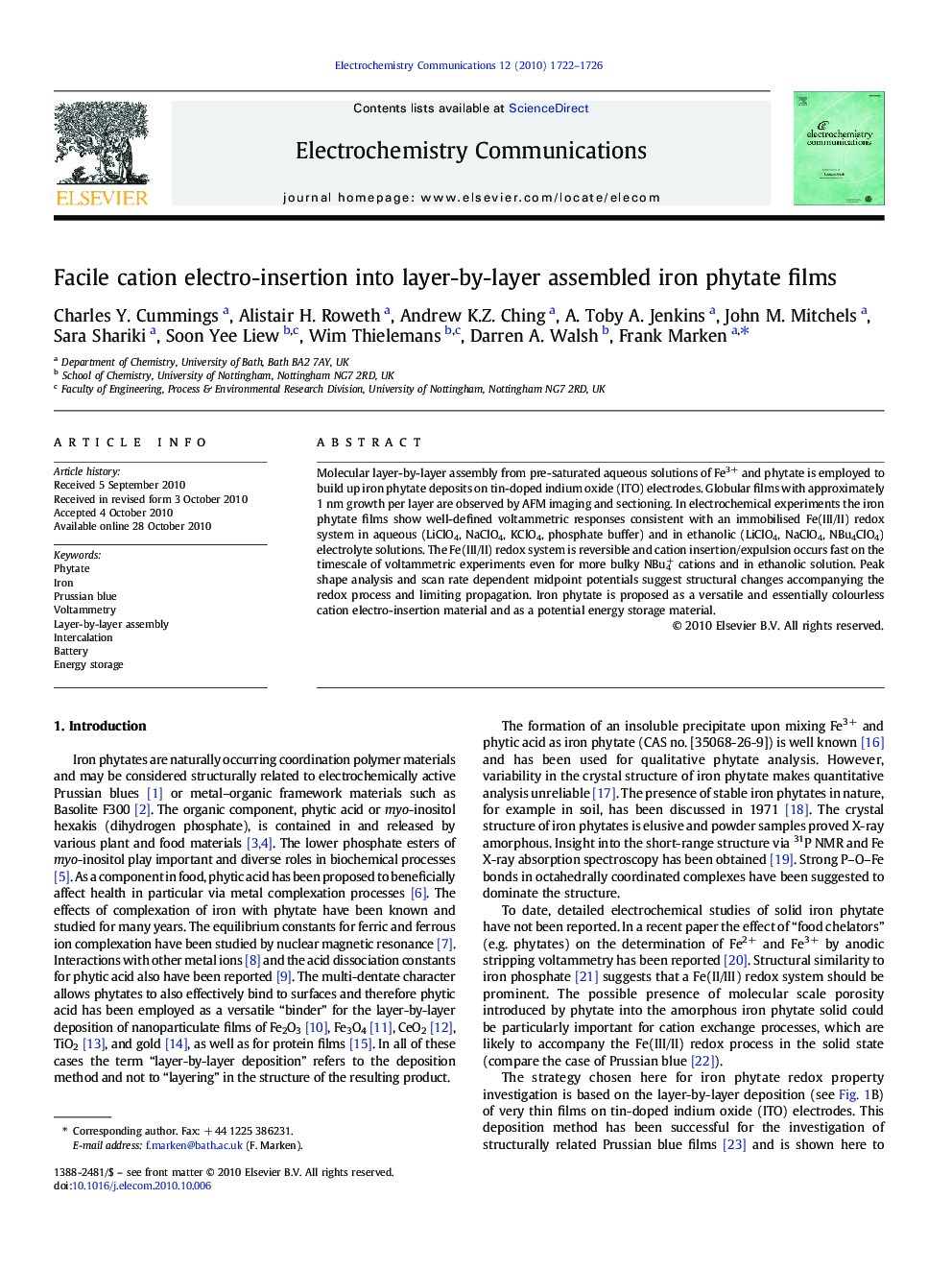| Article ID | Journal | Published Year | Pages | File Type |
|---|---|---|---|---|
| 180790 | Electrochemistry Communications | 2010 | 5 Pages |
Molecular layer-by-layer assembly from pre-saturated aqueous solutions of Fe3+ and phytate is employed to build up iron phytate deposits on tin-doped indium oxide (ITO) electrodes. Globular films with approximately 1 nm growth per layer are observed by AFM imaging and sectioning. In electrochemical experiments the iron phytate films show well-defined voltammetric responses consistent with an immobilised Fe(III/II) redox system in aqueous (LiClO4, NaClO4, KClO4, phosphate buffer) and in ethanolic (LiClO4, NaClO4, NBu4ClO4) electrolyte solutions. The Fe(III/II) redox system is reversible and cation insertion/expulsion occurs fast on the timescale of voltammetric experiments even for more bulky NBu4+ cations and in ethanolic solution. Peak shape analysis and scan rate dependent midpoint potentials suggest structural changes accompanying the redox process and limiting propagation. Iron phytate is proposed as a versatile and essentially colourless cation electro-insertion material and as a potential energy storage material.
